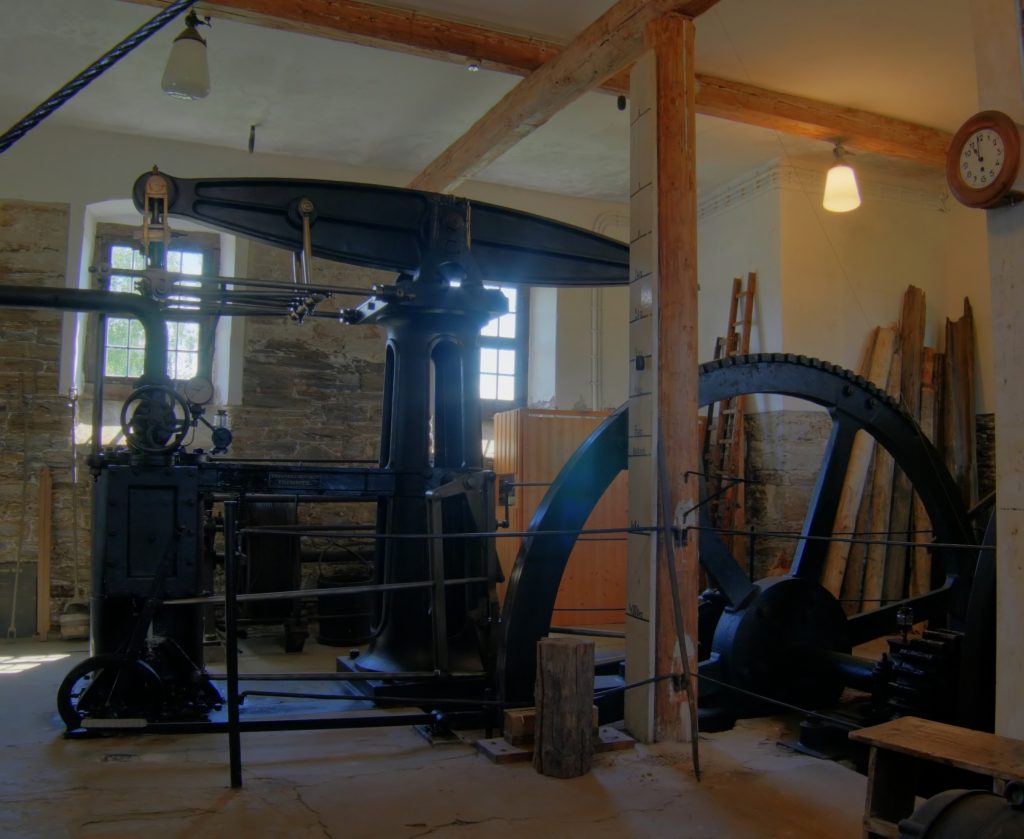To understand Industry 4.0, we will examine the journey that started with Industry 1.0. On the road from Industry 1.0 to 4.0, we will meet the technologies developed at every industry step and the inventors who develop these technologies. When did the industrial journey in history begin? Let’s take a look together.
Industry 1.0 ( 1760 – 1830 )
Start year ; 1760
Finish year ; 1830
Starting country ; England
In the first Industrial Revolution that started in 1760s and lasted into 1830s, the production evolved from physical strength to machine power. Increasing in quantity and improving in quality, the machines used steam power. Steam-powered machines replaced manpower and marked the beginning of the technology revolution. Beginning in the United Kingdom, the Industrial Revolution spread to entire Europe and the USA within a short period.
Industry 1.0 can also be deemed as the beginning of the industry culture which focused equally on quality, efficiency and scale.

The first power loom was designed in 1787 by Edmund Cartwright and first built that same year. This invention is regarded as the most important development leading the industrial revolution. With this development, productivity has been increased 40-50 times, and textile production has been accelerated.
First steam engine
The first commercially successful engine that could transmit continuous power to a machine was developed in 1712 by Thomas Newcomen. Thomas Newcomen is the person who invented the steam engine. James Watt simply translated it into a form for use in industry.
Watt attempted to commercialise his invention, but experienced great financial difficulties until he entered a partnership with Matthew Boulton in 1775. The new firm of Boulton and Watt was eventually highly successful and Watt became a wealthy man. Successfully produced steam engines began to be sold commercially and were often requested to pump water from mines. In 1824 the company had built 1164 steam engines.
James Watt played an important role in the formation of the Industrial Revolution.

A steam engine built to James Watt’s patent in 1848 at Freiberg in Germany
“Watt” is accepted as the unit of power in the SI unit system. The watt is named after the Scottish inventor James Watt.This unit name was proposed initially by C. William Siemens in August 1882 in his President’s Address to the Fifty-Second Congress of the British Association for the Advancement of Science.

James Watt and the Steam Engine: the Dawn of the Nineteenth Century, 1855
The first steamships
On August 22, 1787, the American inventor John Fitch launched the first ferry to the Delaware River. He managed to make regular ferry trips between Philadelphia and Trenton for a while, but Fitch did not achieve commercial success. In 1807, the American inventor, Robert Fulton, started operating the forty-meter-long ferries, named Clermont, on the Hudson River, which was named Clermont, which went at 8 km / hour. In 1809, Phoenix became the first steamboat to sail into the ocean under Moses Rogers, and in 1811 the first ship to operate on the Mississippi River was New Orleans.

The first automobile
The first known example is Fardier, made by French engineer Nicolas Joseph Cugnot. Nicholas Joseph Cugnot tested his small-scale Newcomen machine in 1769 by loading it into a three-wheeled car. However, since there was no system to replenish the boiler water that was reduced by evaporation, the vehicle had to stop every 15 minutes and wait for the water to boil. Fardier is effectively the world’s first automobile.

Cugnot’s 1770 fardier à vapeur, as preserved at the Musée des Arts et Métiers, Paris
Final Words
We are grateful to all inventors for these developments, despite the insufficient opportunities in those years. I am sure that if they were with us today, they would make much more inventions with today’s possibilities.
References
-By James Eckford Lauder (1811 – 1869) (Scottish)Details of artist on Google Art Project – ZQHmRL2lUCzwug at Google Cultural Institute maximum zoom level, Public Domain, https://commons.wikimedia.org/w/index.php?curid=21866007
-By Ingo Berg – Own work, CC BY-SA 3.0, https://commons.wikimedia.org/w/index.php?curid=6859224
–Fardier Photo ; By Joe deSousa – Joseph Cugnot's 1770 Fardier à Vapeur, CC0, https://commons.wikimedia.org/w/index.php?curid=41801028
-By Dr. Karl-Heinz Hochhaus – Own work, CC BY 3.0, https://commons.wikimedia.org/w/index.php?curid=30446717
-https://en.wikipedia.org/wiki/Watt
-https://en.wikipedia.org/wiki/John_Fitch_(inventor)
-https://www.simio.com/blog/2018/09/05/evolution-industrial-ages-industry-1-0-4-0/
-Panther – Drawn by Panther using Corel Draw & Adobe Image Ready. The idea was taken from the book about 1-3-1 «Russian Prairie» «C» series locomotives by A.S. Nikolskiy, Moscow, 1997 (1-3-1 is in Russian notation, calculated by wheel pairs), CC BY-SA 3.0, https://commons.wikimedia.org/w/index.php?curid=114662
-https://www.britannica.com/technology/history-of-technology/The-Industrial-Revolution-1750-1900
-https://www.sanayidegelecek.com/
-https://www.azquotes.com/quote/502939
-Photo by Courtney Cook on Unsplash


